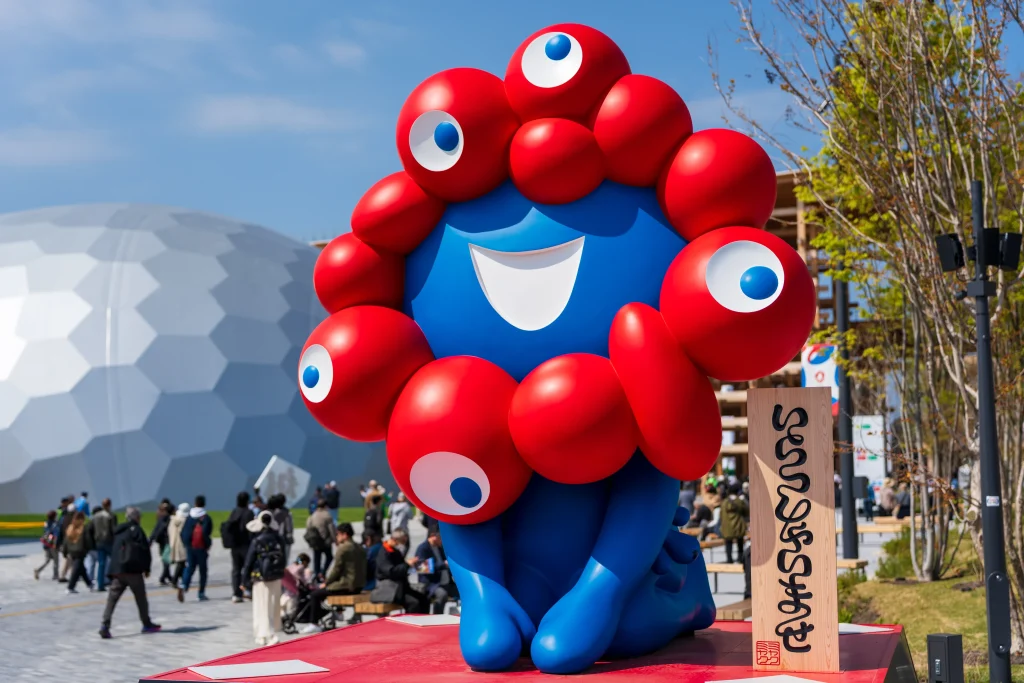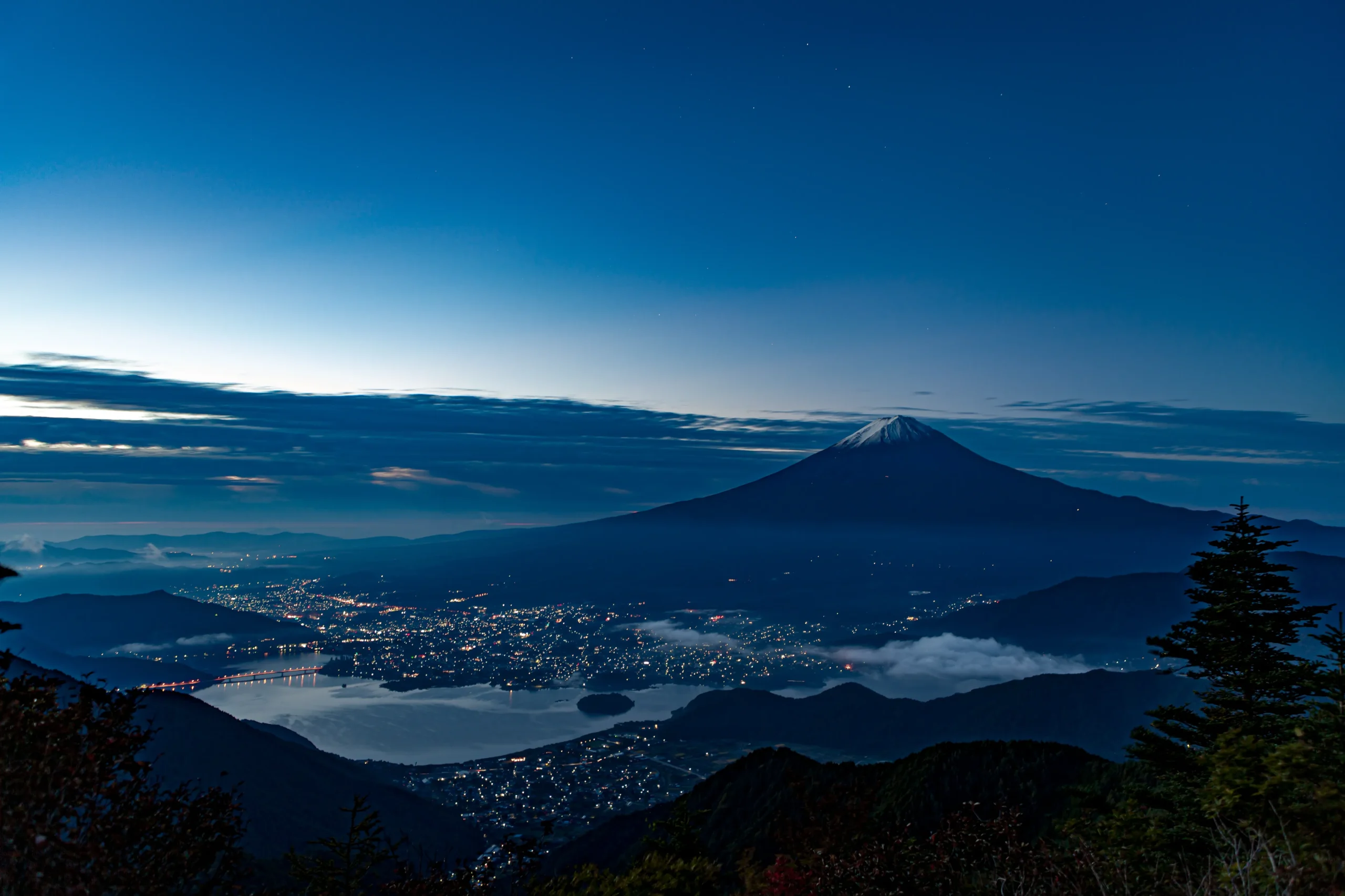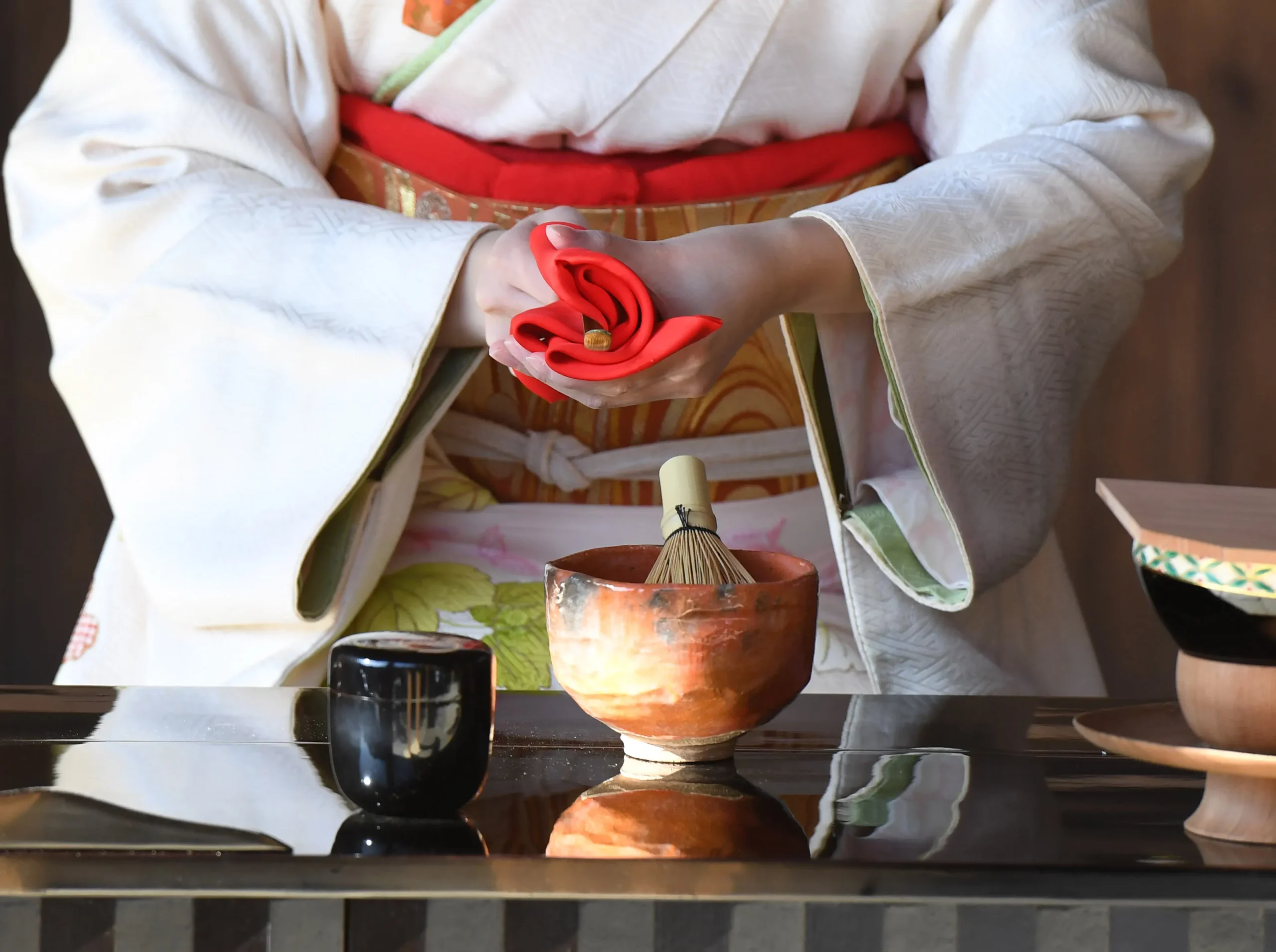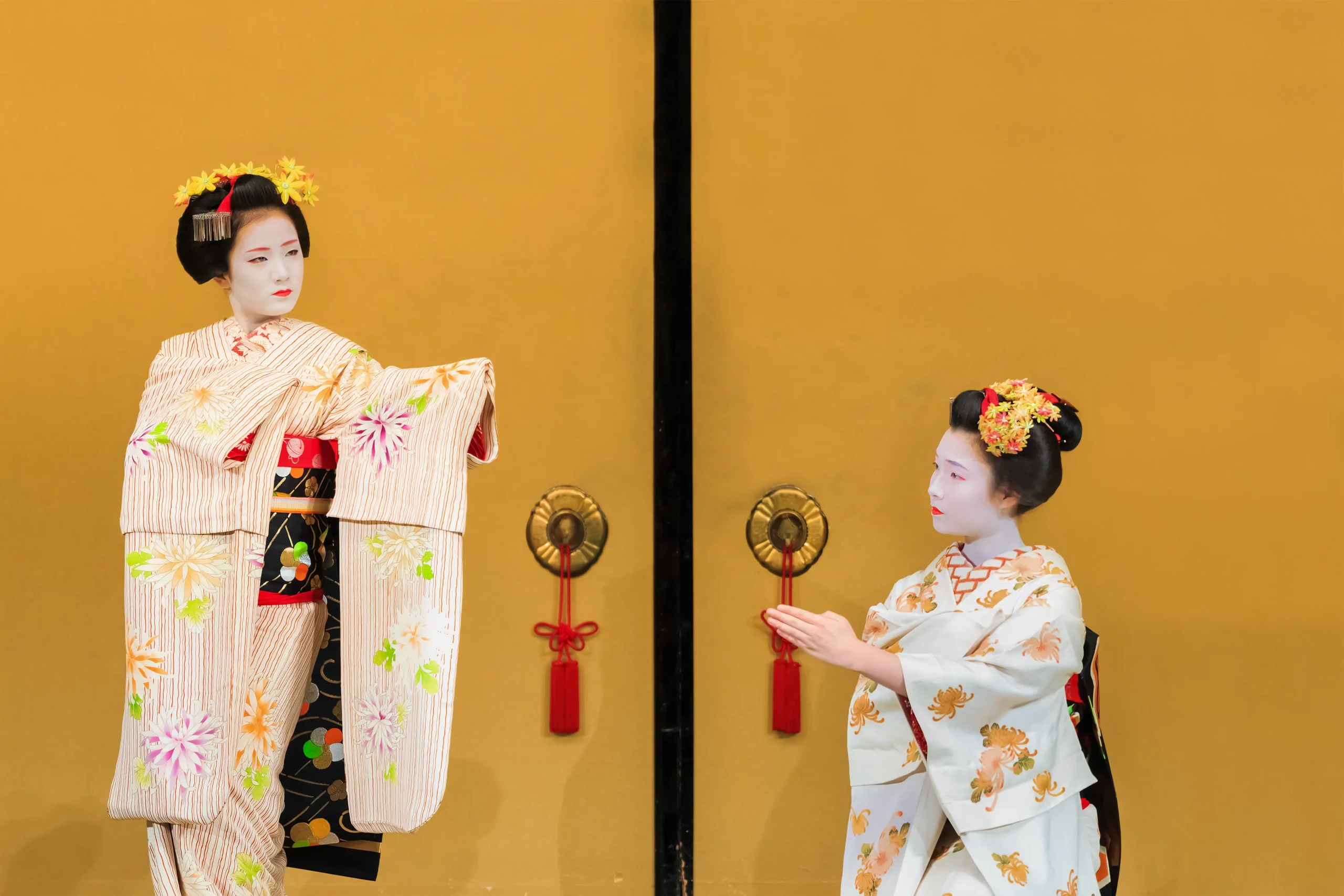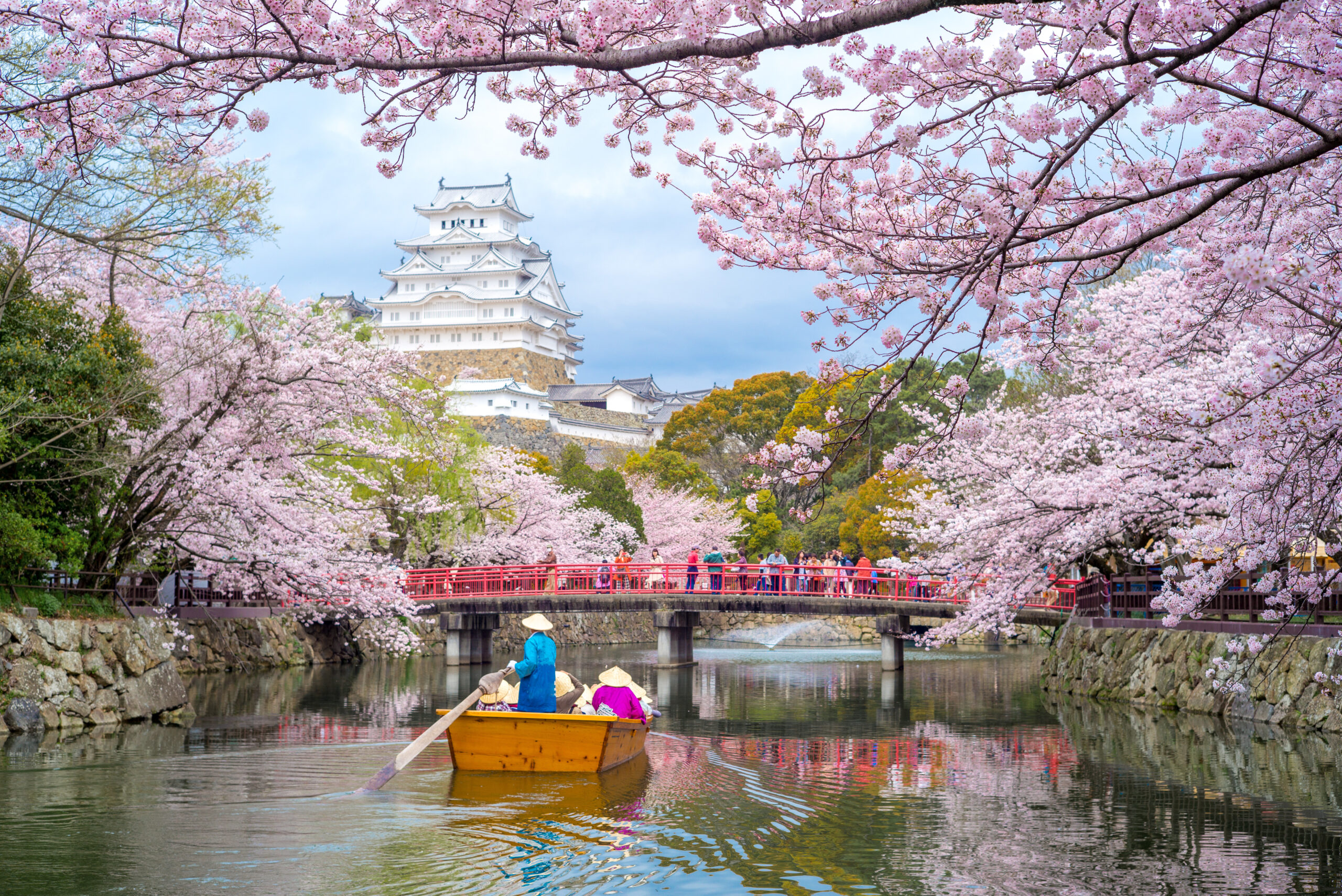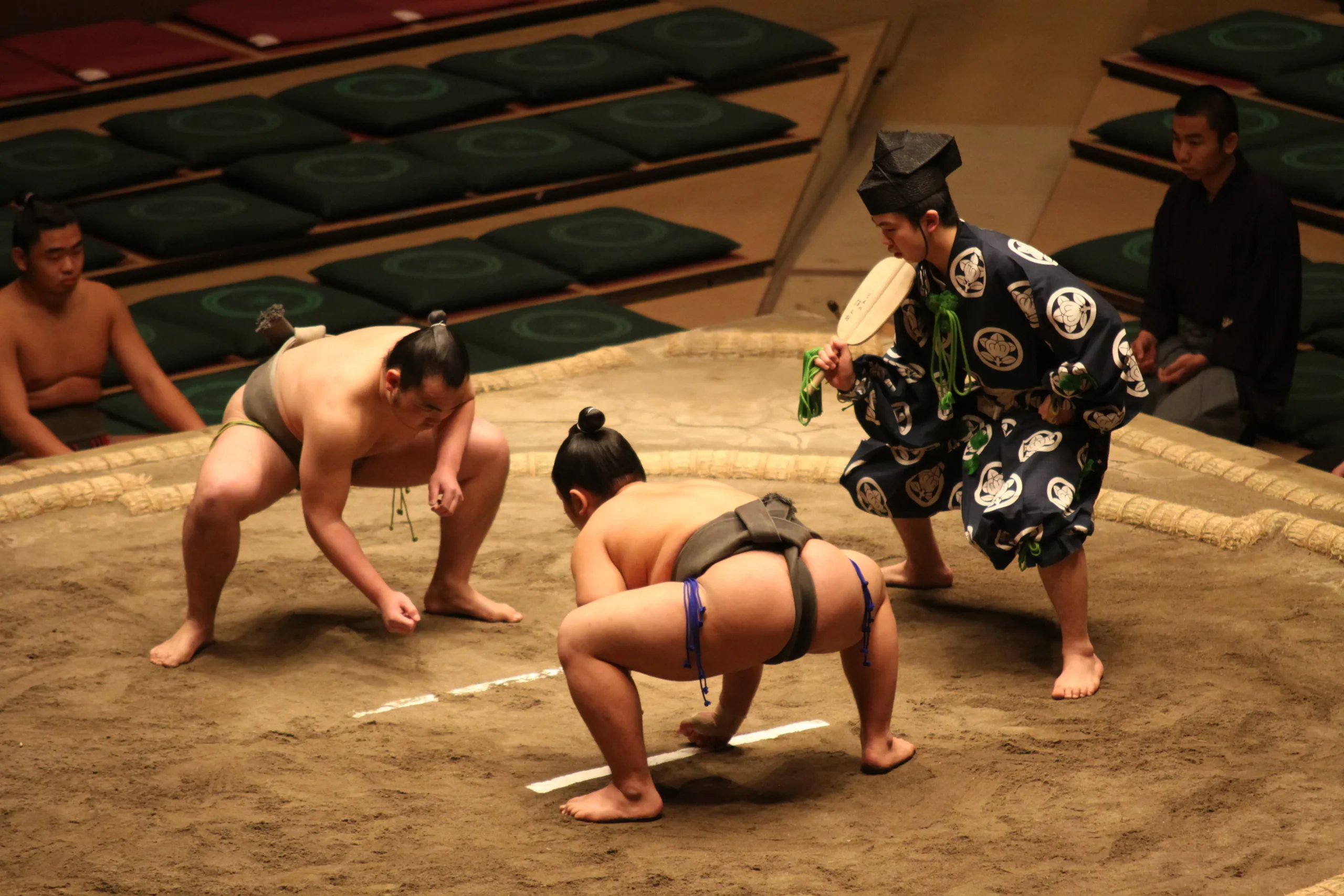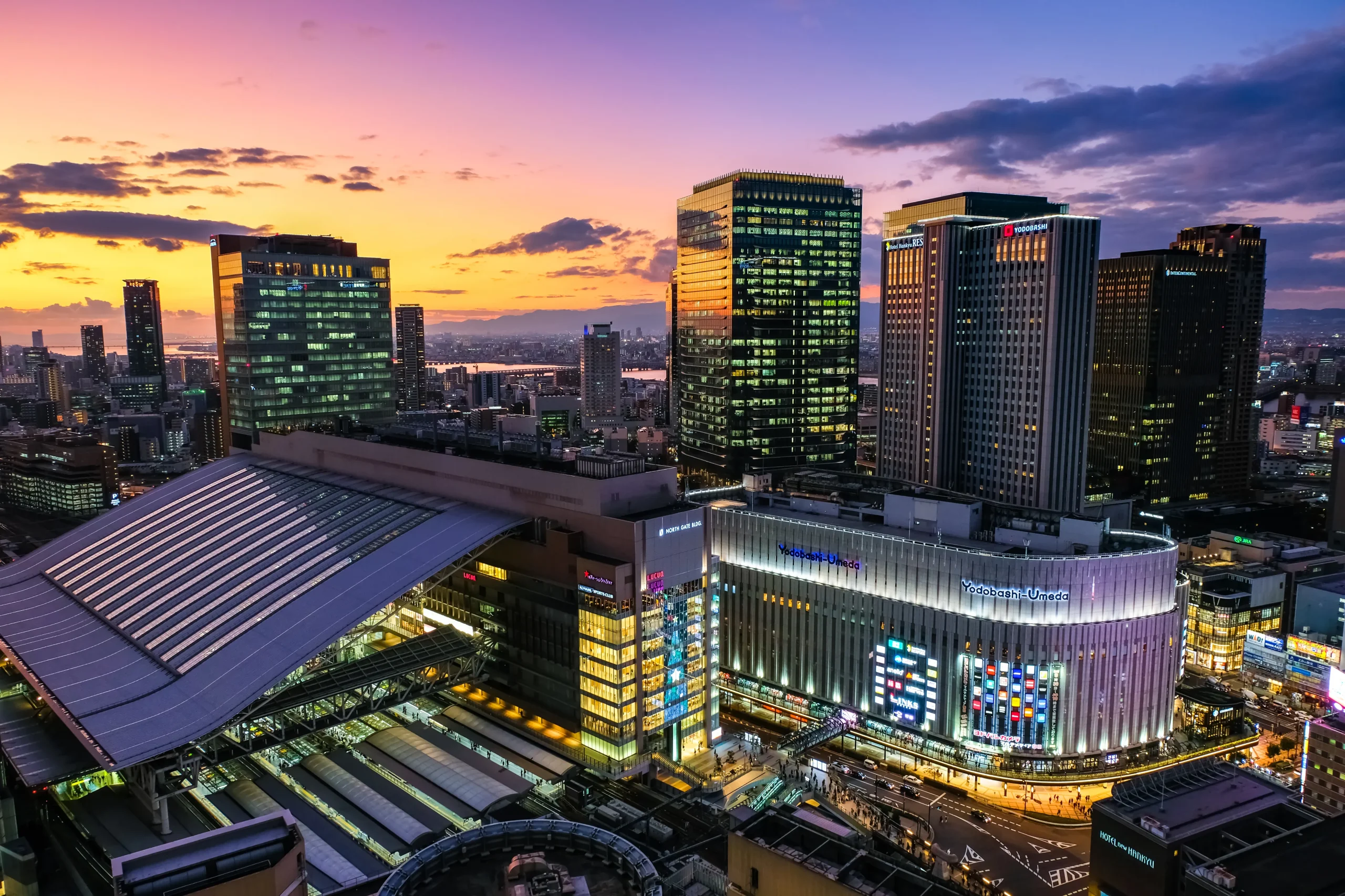The Expo 2025 Osaka, Kansai, Japan has officially begun this April. After 55 years, the World Expo has returned to Osaka for the first time since the iconic 1970 Expo, which was held under the theme “Progress and Harmony for Mankind.” Now, more than half a century later, the 2025 Osaka-Kansai Expo opens a new chapter with the forward-looking theme: Designing Future Society for Our Lives. Pavilions from around the world, cutting-edge technologies, and immersive experiences that offer a glimpse into how we might live in the future await visitors—promising moments of wonder, inspiration, and discovery.
In this column, I’ll be sharing firsthand impressions from my visit to the Expo, highlighting must-see pavilions, unique attractions, and the overall atmosphere of the venue. If you’re planning a visit, you’ll also find helpful tips to make the most of your experience.
The Main Theme for Osaka-Kansai Expo
The theme of Expo 2025 is “Designing Future Society for Our Lives.” It carries a powerful message: a call for each of us to reflect on the future of society and take part in shaping a brighter tomorrow together.
Throughout history, human progress has been supported by the natural systems of the universe—space, the oceans, and the earth—and enriched by diverse cultures. Yet, it’s also true that many of today’s global challenges, such as environmental degradation and social inequality, are consequences of our own actions. As life sciences and digital technologies evolve at a rapid pace, we’re now being asked to reexamine our relationship with life itself—and to reconsider how our societies should be structured. With innovation comes responsibility: how will we use the power of science and technology to build a better future?
Expo 2025 offers a shared space for people from all over the world to gather, exchange ideas, and gain new perspectives on life and the future. In this era of uncertainty and transformation, the Expo is more than just a global event—it’s a rare opportunity to rediscover human potential, rekindle hope, and take meaningful steps toward a more sustainable world.
About Official Character: Myaku-Myaku
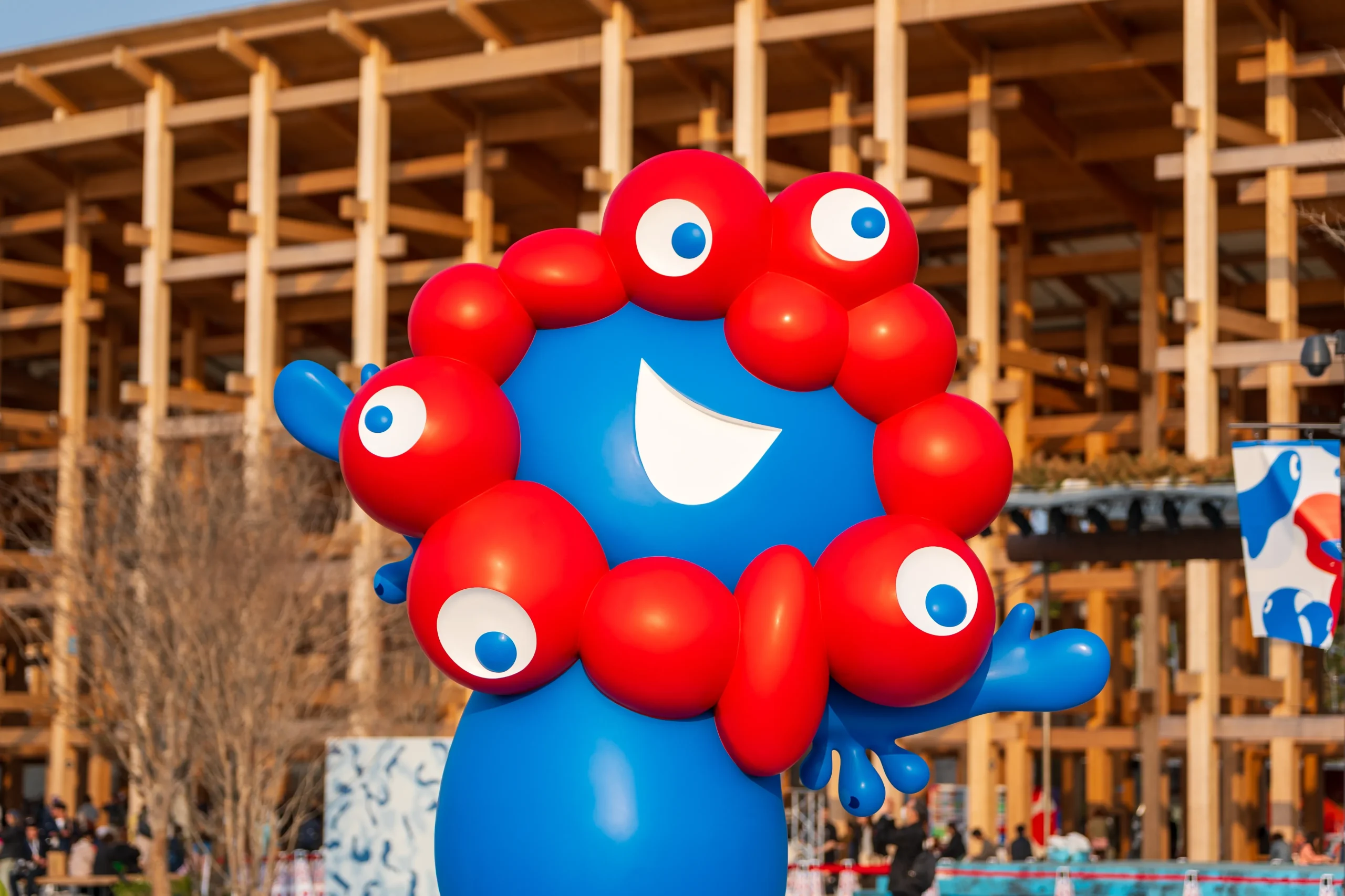
As you walk through the streets of Osaka, you might come across curious red-and-blue creature. That would be Myaku-Myaku, the official character of Expo 2025.
This one-of-a-kind character is a blend of symbolism and playfulness. The red part represents “cells” that divide and multiply, while the blue part symbolizes water—fluid, ever-changing, and free. Its name, Myaku-Myaku, comes from a Japanese expression that refers to the continuous flow of life, knowledge, and history being passed down through generations.
At the Expo site, Myaku-Myaku welcomes visitors at the entrance and you can find them in the merchandise shops. But it doesn’t stop there—keep an eye out for tiny, Myaku-Myaku-like creatures scattered across the grounds. Known affectionately on social media as Komyaku, they’ve quickly become fan favorites. These Komyaku are cells, and each one represents the idea that life is inherently diverse, dynamic, and always in motion. True to their nature, Komyaku are constantly changing shape and form, cooperating with each other to create new life. The name Komyaku is a combination of ko (“individual”) and myaku (“pulse” or “lifeforce”), reflecting the uniqueness and vitality of every living being. Through the character of Komyaku, Expo 2025 shares a deeper message in a fun and intuitive way: that all forms of life—human, natural, technological, even those born of AI or biotechnology—can coexist in harmony. The Expo envisions a future that transcends division and dissonance, offering a glimpse of a world where every life resonates with one another.
At its heart, this Expo draws on an animistic worldview rooted in Eastern philosophy—the belief that everything, even inanimate objects, possesses a spirit or lifeforce. Here, that perspective is extended to technology itself, blurring the lines between nature and the artificial. Myaku-Myaku and Komyaku invite us to imagine a future where all forms of life shine in their own way, connected through cooperation, evolution, and shared purpose.
The Grand Ring
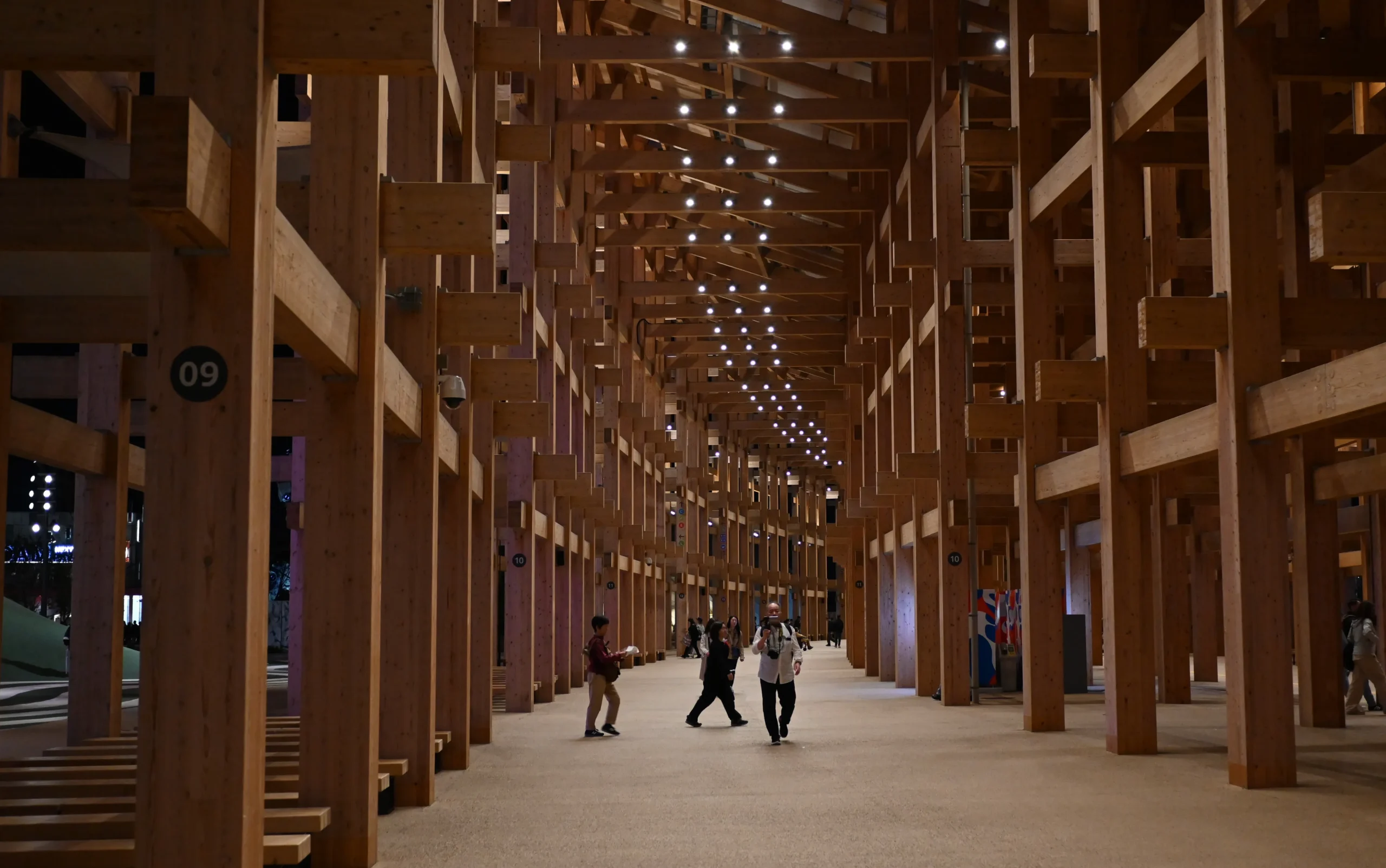
One of the most iconic features of Expo 2025 Osaka, Kansai is the Grand Ring, the largest wooden structure in the world. Inspired by traditional Japanese architecture, the ring incorporates the nuki-joint method—an ancient joinery technique famously used in Kiyomizu-dera Temple in Kyoto. Seamlessly blending age-old craftsmanship with cutting-edge construction techniques, the structure stands as a stunning fusion of tradition and innovation. Many visitors are simply stunned by its scale and beauty.
There are benches under the ring invite you to sit back and relax—a peaceful break after walking through the spacious Expo grounds. You can also head up to the rooftop of the ring, where sweeping views await. From this high point, you’ll spot the pavilions spread out below and, on clear days, the Seto Inland Sea in the distance.
More than just an architectural landmark, the Grand Ring stands as a symbol of connection and flow. Surrounding the pavilions of countries from around the world, it brings together diverse cultures and perspectives in one shared space. It’s a quiet yet powerful reminder of what the Expo is all about—collaboration, unity, and a shared vision that transcends borders.
Must-see Pavilions at Osaka-Kansai Expo 2025
At Expo 2025 Osaka, Kansai, the pavilions fall into three main types: Signature Pavilion, Official Participants’ Pavilions and Domestic Pavilions.
Signature Pavilion
At the heart of the Expo site lies the Signature Pavilion area, where eight unique pavilions bring the Expo’s theme to life. Each pavilion explores a different aspect of the theme, guided by a leading producer at the forefront of their field. Working in collaboration with renowned architects from Japan and around the world, these creative teams have crafted spaces that are truly one of a kind. We’ll spotlight three of these distinctive pavilions.
1. Future of Life
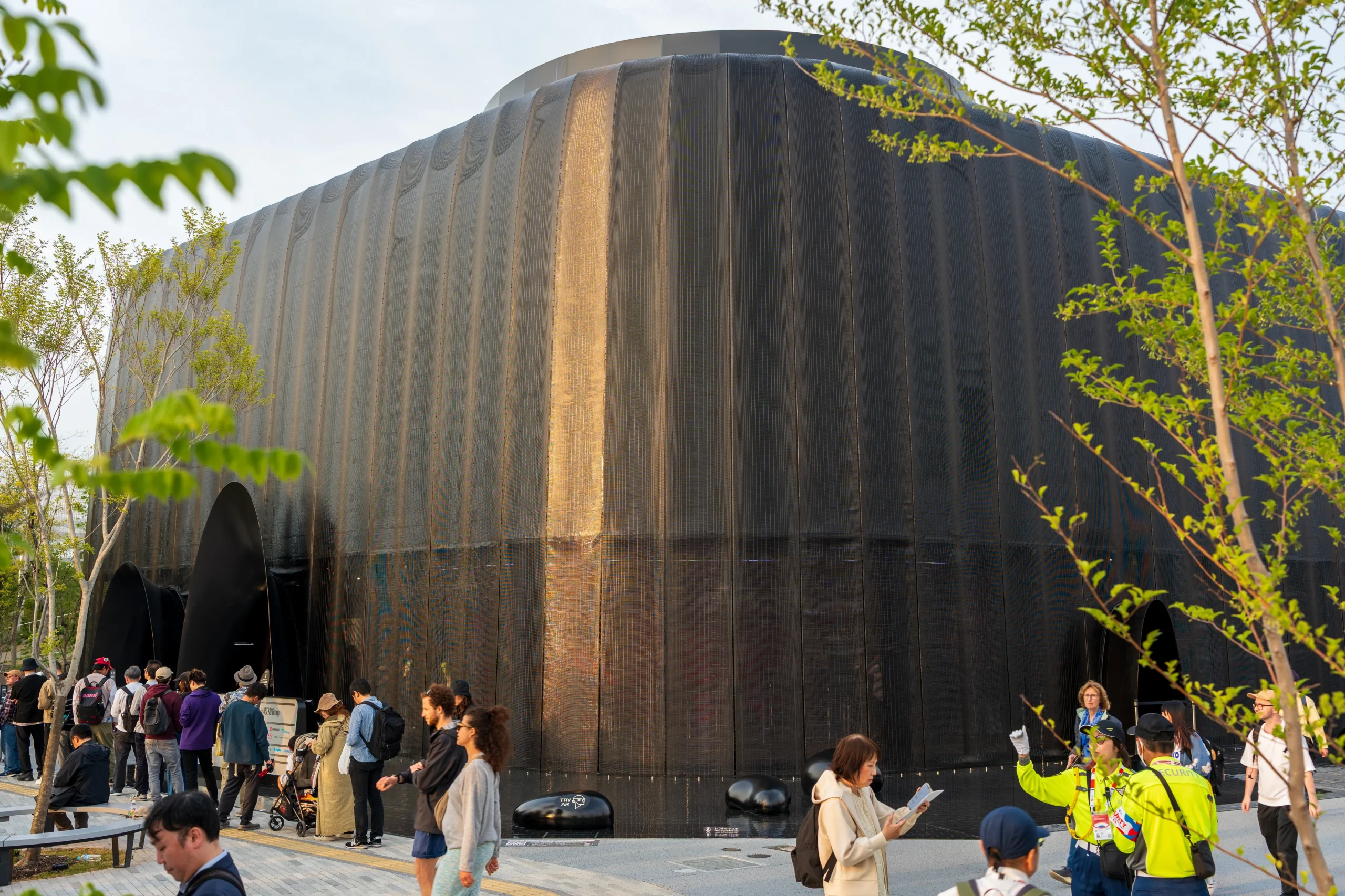
Future of Life is a pavilion produced by Hiroshi Ishiguro, a leading figure in robotics. It envisions a future shaped by three key technologies: robotics and AI that expand human potential, medical advances that extend healthy life expectancy, and environmental and energy innovations that foster harmony with nature.
This immersive, story-driven pavilion brings future lifestyles to life through robots and holograms—offering a glimpse into daily life with androids and the technologies that may soon become part of our world.
2. null2
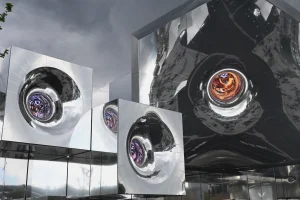
null2 is a pavilion produced by media artist and researcher Yoichi Ochiai. Known for his media art that blurs the line between image and matter, as well as his pioneering concept of Digital Nature—a view of nature shaped by the digital age—Ochiai invites visitors into a space where technology and perception converge.
The pavilion’s striking exterior immediately captures attention, compelling passersby to stop and take notice. Its ever-changing facade incorporates dynamic elements: the building itself trembles in response to sound, while robotic arms embedded within distort its structure. These constant transformations hint at a future where the boundaries between humans and AI, matter and information, grow increasingly fluid.
This immersive space embodies the philosophy of Digital Nature, offering a visceral and thought-provoking experience. It’s a place where visitors can feel and reflect on what it means to coexist with technology in the world to come.
3. Better Co-Being
Set within a quiet corner of the Expo’s central Forest of Tranquility, Better Co-Being invites visitors into a space of subtle connection and reflection. At the heart of the experience is the echorb—a handheld device powered by 3D haptics technology. Without any physical contact, it allows users to resonate with others and interact with artworks through shared vibrations and sound.
This tactile sense of connection transcends language, encouraging us to reconsider what it truly means to “be together.” It opens up new forms of communication, where empathy is felt, not spoken. With its focus on perception and presence, this pavilion offers a deeply engaging experience—especially for those drawn to art, the body, and sensory expression.
Official Participants’ Pavilions
At Expo 2025, 158 countries and regions will come together to showcase their cultures, technologies, and innovations. While the exhibitions inside each pavilion are a highlight, the architecture itself is just as fascinating—each building reflects the unique traditions and identity of the country it represents. We’ll introduce four standout pavilions from the Official Participants’ Pavilions.
1.UAE
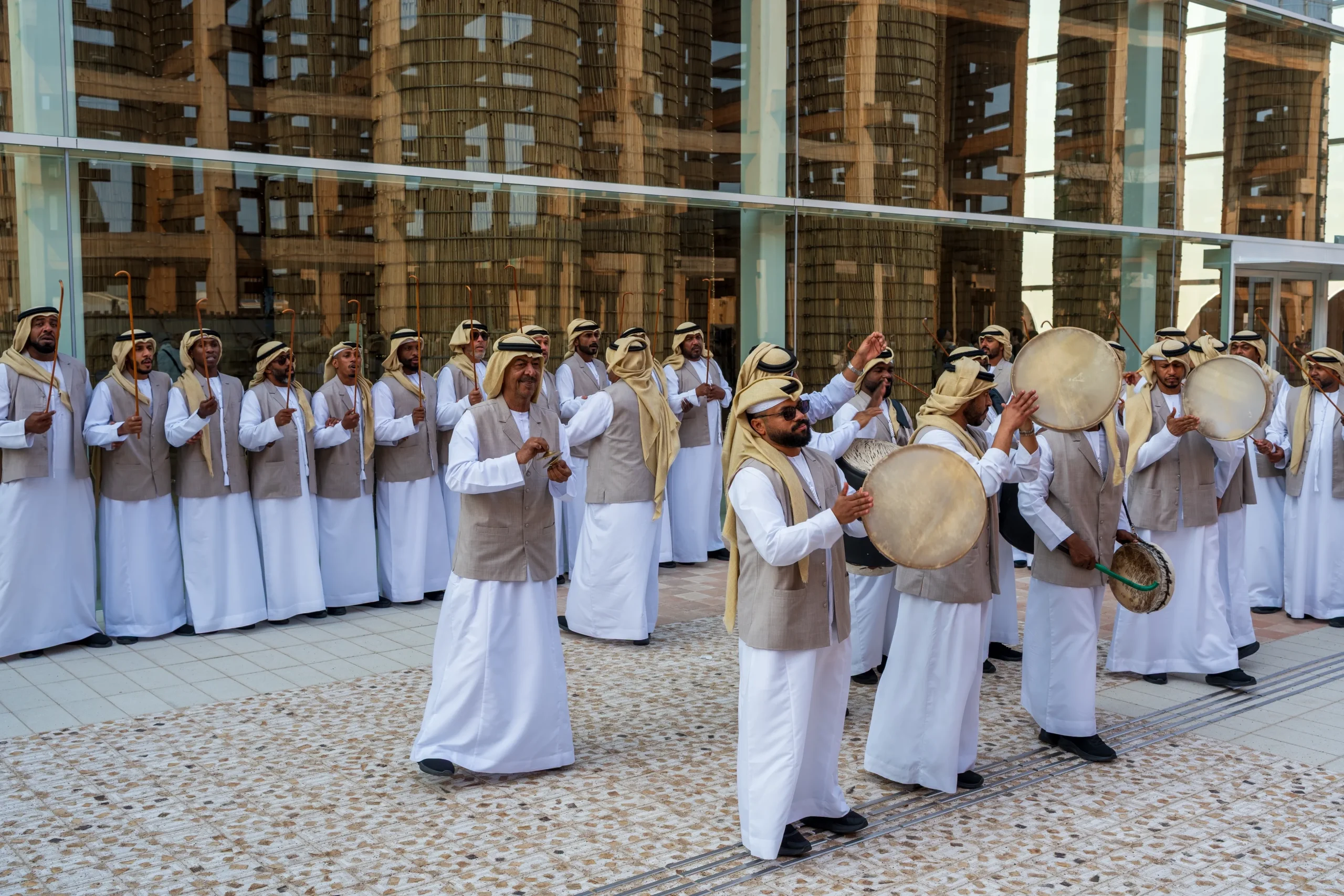
Lined with pillars made from locally sourced date palm wood, the UAE Pavilion welcomes visitors into a bright, open space filled with sunlight. Inside, dynamic displays and immersive visuals highlight the country’s many facets—from traditional crafts to cutting-edge industries like space exploration.
One of the highlights is the pavilion’s restaurant, where you can savor exclusive dishes that put a modern twist on traditional Emirati cuisine.
Designed around the theme “Earth to Ether,” this pavilion blends natural materials with advanced technologies, offering a powerful expression of the UAE’s rich cultural heritage and grand vision for the future.
2.China
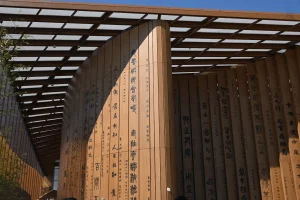
With the theme “Building a Community of Life for Man and Nature — Future Society of Green Development,” the China Pavilion combines ancient cultural heritage with futuristic achievements. Its exterior is inspired by the flowing elegance of traditional Chinese calligraphy, creating a striking visual identity.
Inside, visitors can view rare national treasures—artifacts from ancient Chinese civilizations, along with statues of influential historical figures such as Ganjin, the renowned monk who helped build cultural bridges between China and Japan. These priceless items are rarely seen outside the country.
In a powerful contrast, the pavilion also showcases a sample of lunar soil collected from the far side of the moon by Chang’e-6, China’s unmanned lunar probe, in June 2024—the first mission of its kind in the world.
3.Jordan
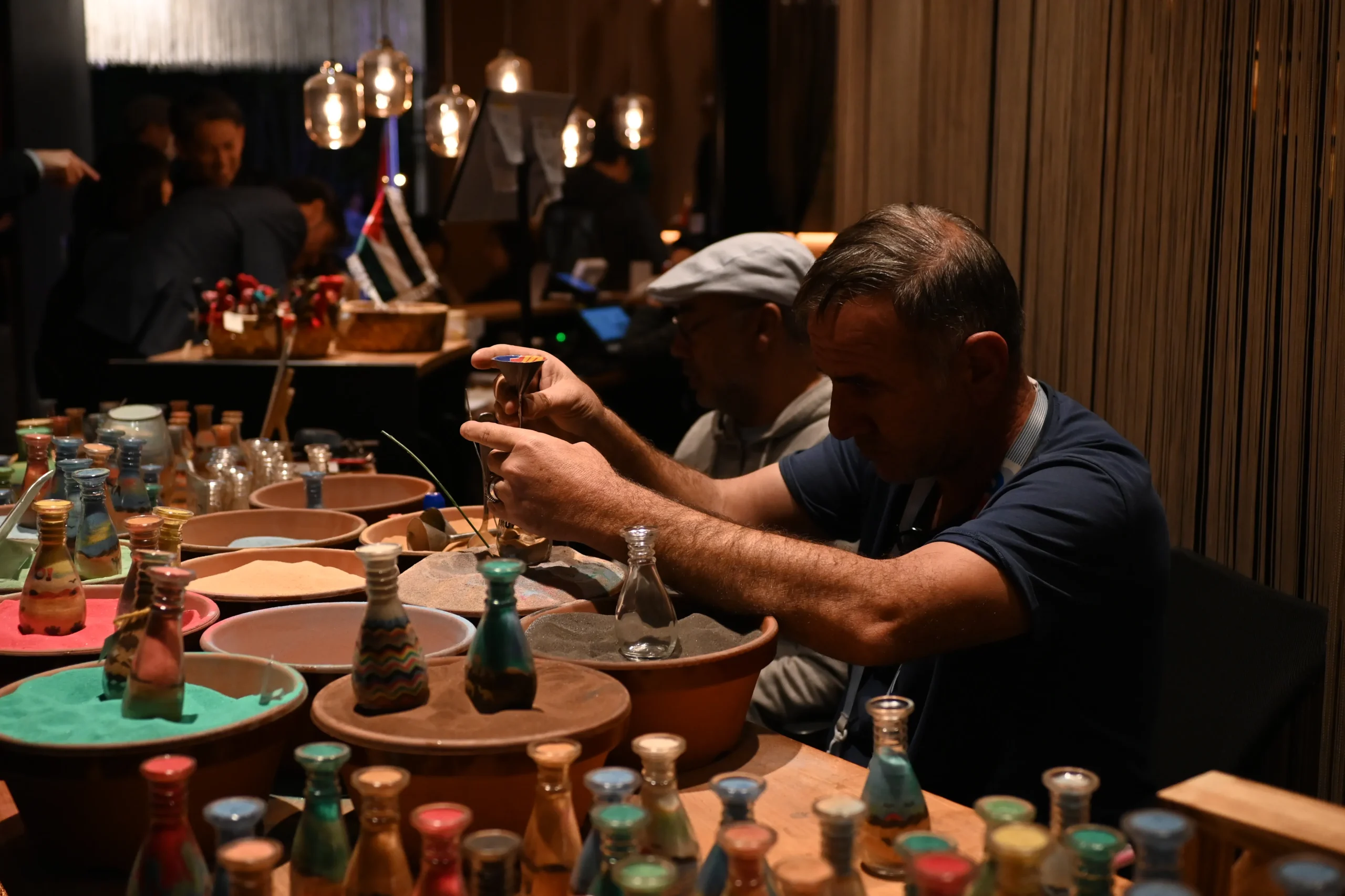
Step into the Jordan Pavilion and you’ll find the floor of its exhibition room covered with red desert sand from Wadi Rum—a UNESCO-protected area also known as a filming location for Star Wars. For Expo 2025, around 22 tons of sand were shipped from Jordan to Japan. In accordance with Japanese regulations, every grain was carefully washed and sun-dried to remove microorganisms and bacteria before use.
In addition to the immersive desert environment, visitors can also enjoy a relaxing massage using mineral-rich Dead Sea salt—offering a sensory experience that blends natural beauty with wellness traditions from Jordan.
4.Italy
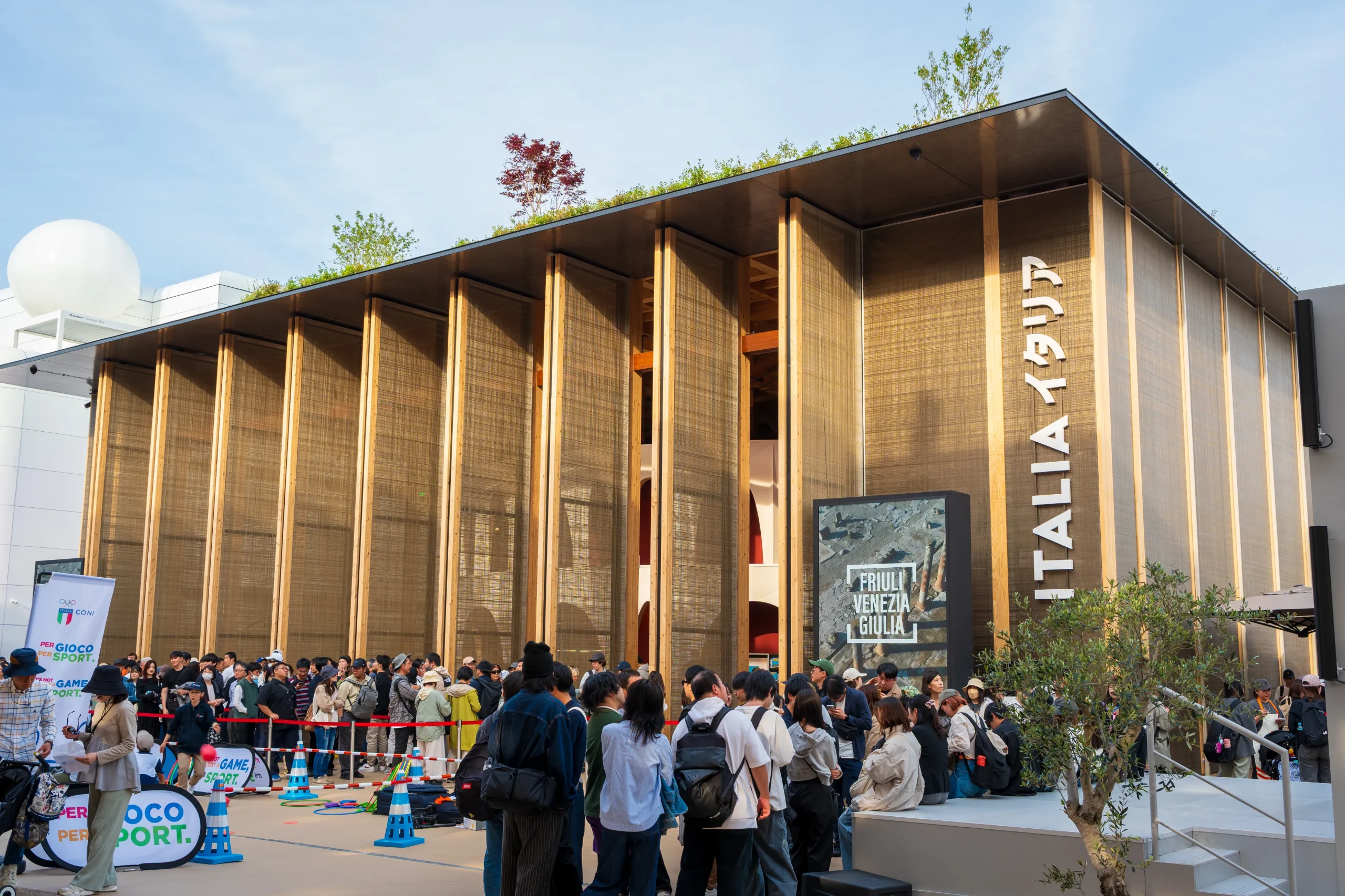
The Italy Pavilion invites visitors into La Città Ideale—the “Ideal City”—a concept that brings together the country’s rich cultural heritage and cutting-edge innovation. Here, the essence of “Made in Italy” is on full display, celebrating both tradition and forward-looking creativity.
Among the highlights are extraordinary masterpieces from Italy’s history, including the ancient Roman sculpture Farnese Atlas, Caravaggio’s powerful painting The Entombment of Christ, and original sketches by Leonardo da Vinci. These iconic works create a sense of awe and cultural depth.
At the same time, the pavilion looks to the future with exhibits on space exploration and life sciences, offering a dynamic experience that captures Italy’s spirit of ingenuity and invention.
Domestic Pavilions
The Domestic Pavilions offer a hands-on look at Japan’s vision for the future—places where visitors can see, touch, and experience what’s to come. We’ll introduce three standout pavilions that highlight innovation, culture, and possibility.
1.Joint Pavilion Iida Group × Osaka Metropolitan Univ.
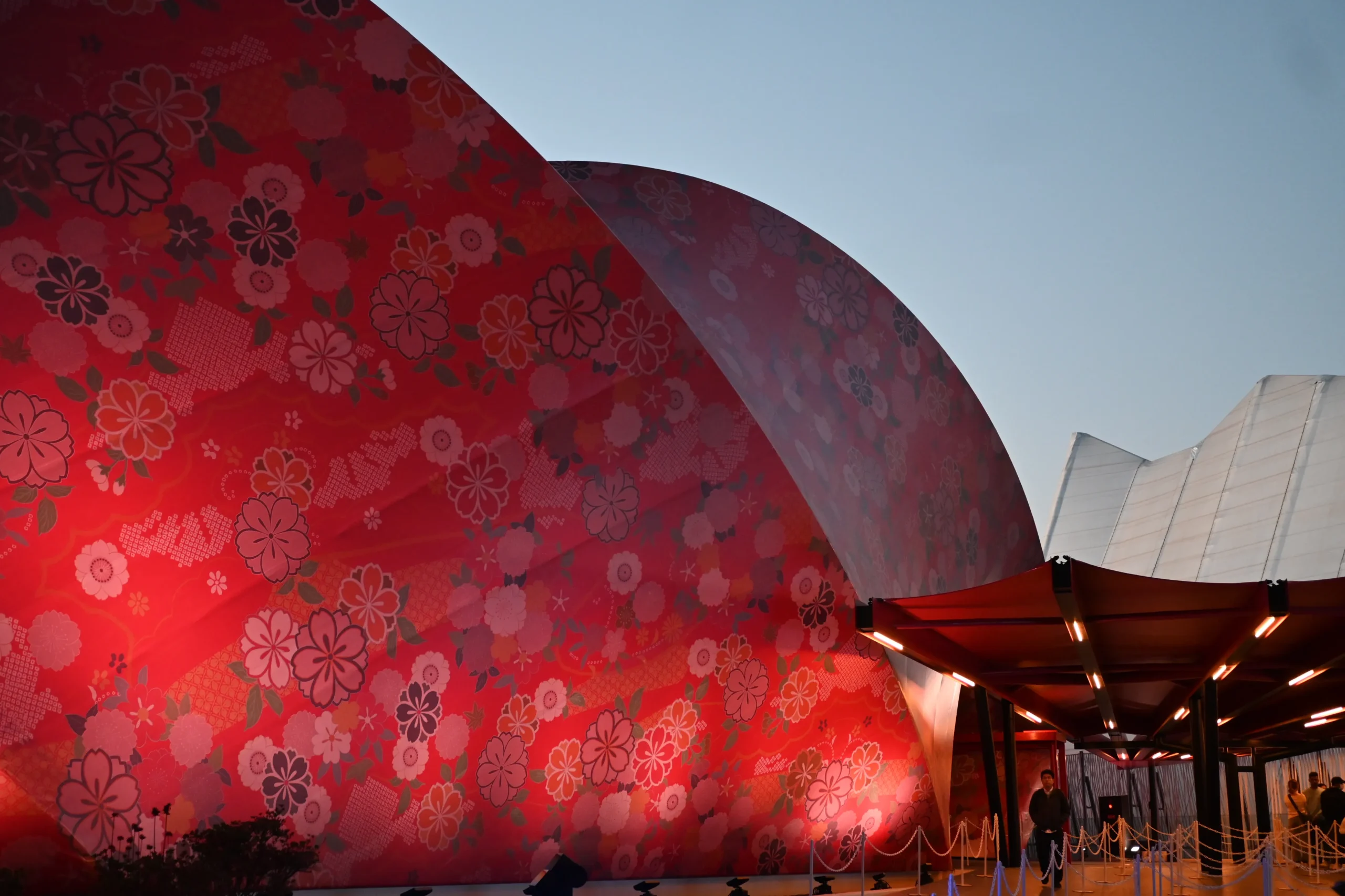
This pavilion by Iida Group and Osaka Metropolitan Univ. tells a powerful story of life evolving across time—linking traditional wisdom and craftsmanship from the past, cutting-edge technologies of the present, and the boundless possibilities of the future. It presents a vision of life as a cycle that transcends generations, continuously circulating and evolving. Its exterior is wrapped in a breathtaking display of Nishijin-ori, a traditional Kyoto textile woven on the world’s largest scale. Enhanced with state-of-the-art 3D projection mapping, the facade becomes a stunning symbol of harmony between heritage and innovation.
Inside, the pavilion showcases futuristic technologies that support sustainable living—artificial photosynthesis aimed at a decarbonized society, wellness-centered smart homes, and more. A diorama of a future city imagined for 2050 allows visitors to intuitively explore what tomorrow’s urban life might feel like.
This immersive space interweaves past, present, and future; tradition, technology, and human life—quietly but powerfully conveying the ongoing cycle of life and renewal that defines our collective journey.
2.BLUE OCEAN DOME

The BLUE OCEAN DOME is a pavilion that invites visitors to engage in a dialogue with our water planet—Earth. With a focus on the sustainable use of marine resources and the protection of ocean ecosystems, it poses an urgent question: What does the future hold for humanity and the sea?
The structure itself embodies this commitment to sustainability. Built with lightweight, reusable materials such as laminated bamboo, CFRP (carbon fiber-reinforced plastic), and recycled paper tubes, the dome showcases a new approach to eco-conscious architecture. These advanced materials—also used in aerospace and automotive industries—offer both strength and efficiency, all while minimizing waste.
From its structure and materials to its exhibits, every aspect of the pavilion reflects the theme of sustainability. It’s a space filled with insight and inspiration—an invitation to imagine a future where we live in harmony with the ocean and the planet.
3. Osaka Healthcare Pavilion
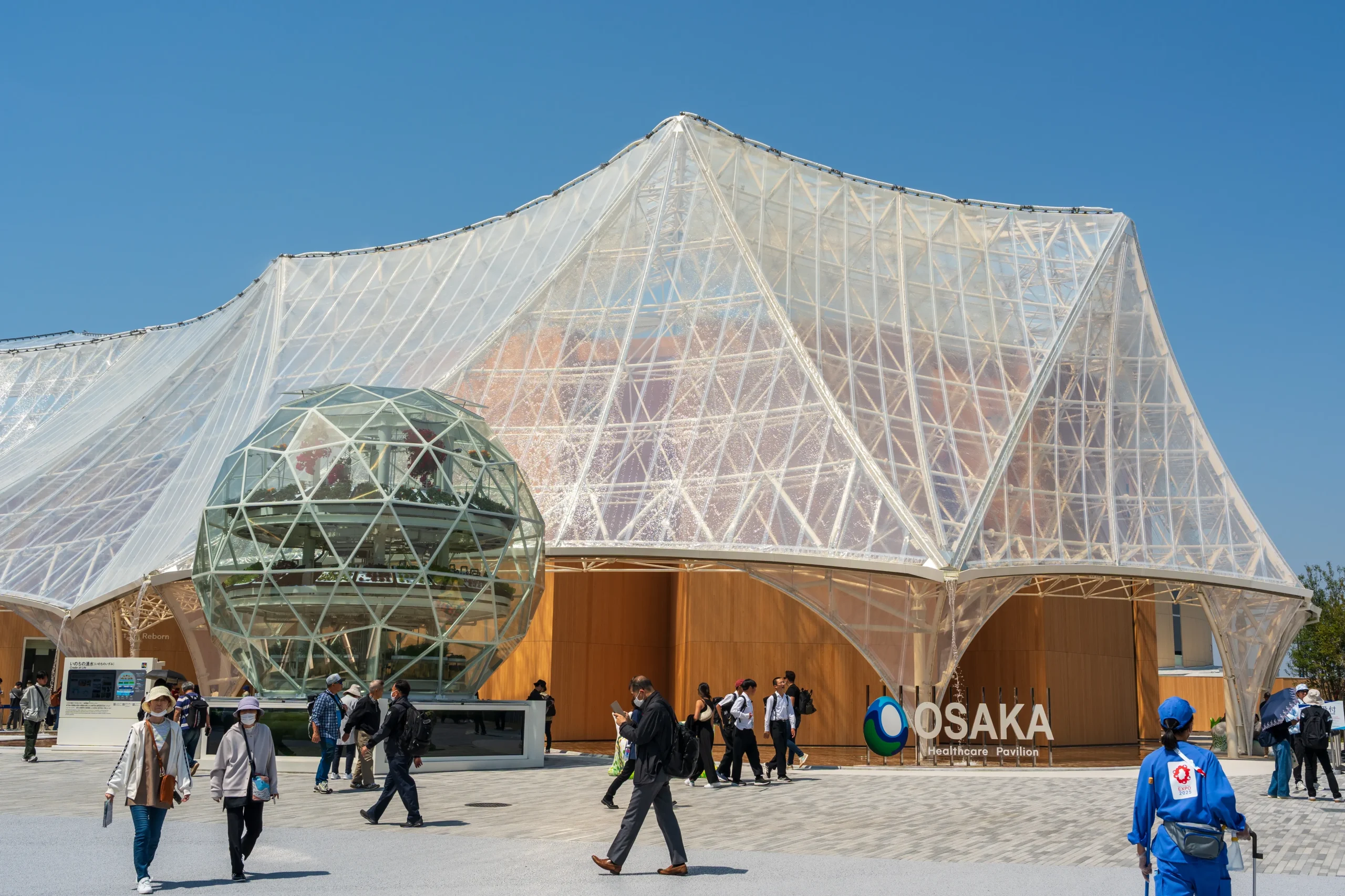
The Osaka Healthcare Pavilion explores the future of life and well-being, offering visitors a hands-on experience of what society might look like in 2050 through cutting-edge medical and wellness technologies.
One of its most talked-about features is the Reborn Experience Route, where visitors who register in advance will be greeted by a digital avatar of themselves—25 years into the future. This powerful encounter with your future self inspires reflection on personal health and offers a hopeful glimpse into what lies ahead.
The pavilion also showcases a wide range of innovative exhibits: a “human washing machine,” heart tissue sheets created from iPS cells, and lab-grown meat produced using 3D bioprinting, just to name a few. It’s a truly immersive space where you can explore the many ways that science and technology may shape the future of healthcare and daily life.
Event in Osaka-Kansai Expo 2025
Throughout the Expo, participating countries, regions, and international organizations will each host a National Day or Special Day. These events feature official ceremonies and cultural performances, welcoming visitors from around the world. It’s a rare opportunity to experience the diversity and richness of global cultures all in one place. At the Water Plaza—located in the Grand Ring—visitors can enjoy a spectacular show where water, air, light, fire, visuals, and music come together in a dazzling performance on the water. In addition to these highlights, a wide variety of events will take place daily. For the latest schedule and details, please visit here.
How to Get to Osaka-Kansai Expo
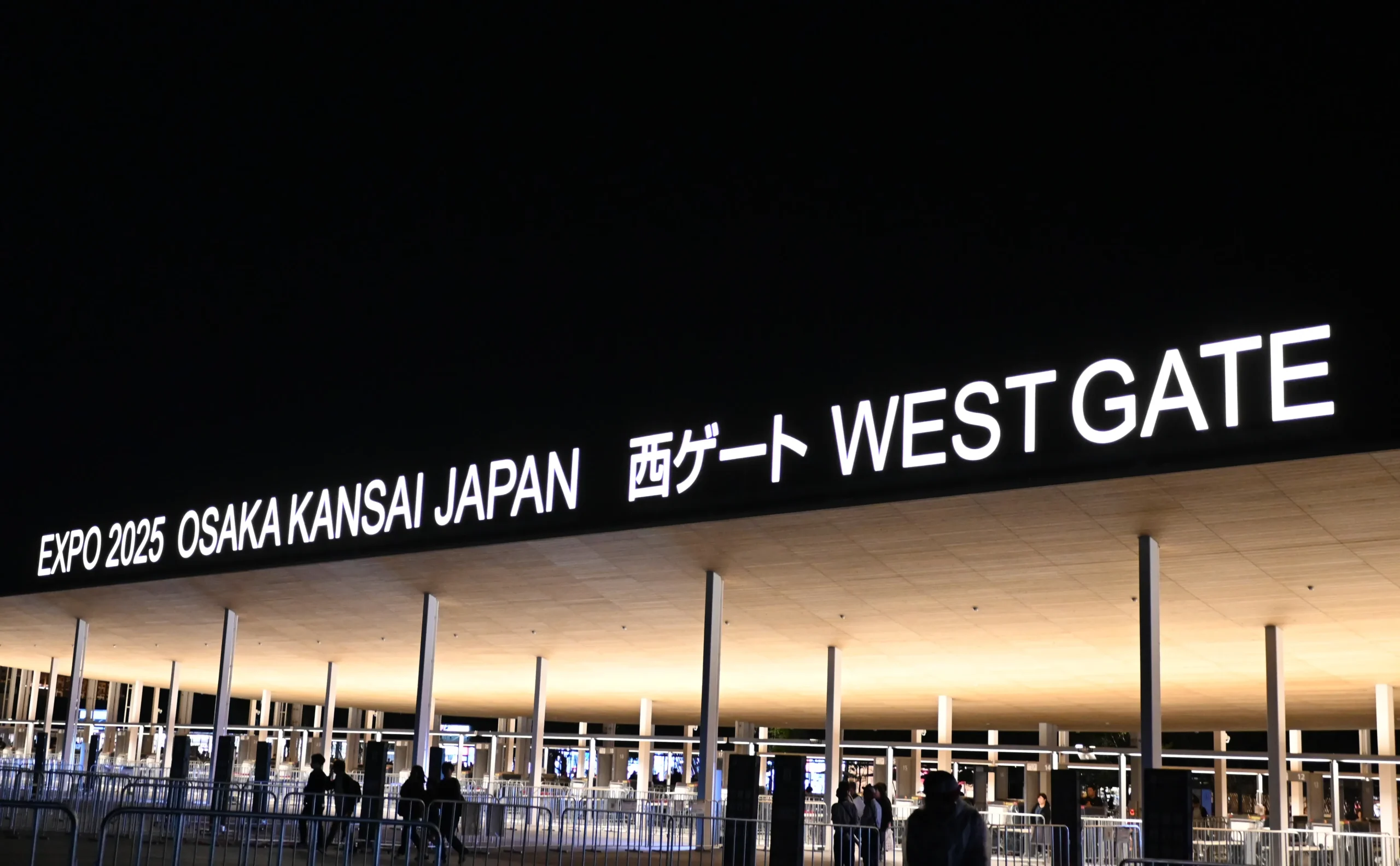
Expo 2025 will be held from April 13 to October 13, 2025, on Yumeshima, an artificial island. Visitors are strongly encouraged to use public transportation such as trains, buses, and ferries to reach the venue.
The nearest station is Yumeshima Station on the Osaka Metro Chūō Line, which connects directly to the Expo site. You can transfer to the Chūō Line from Honmachi Station, on the Midosuji Line, or Bentencho Station, on the JR Osaka Loop Line. From Yumeshima Station, it’s a short walk to the entrance. To ensure a smooth experience, it’s recommended to avoid peak hours and allow extra time when planning your visit.
During the Expo, direct shuttle buses will also run from major Kansai hubs like Shin-Osaka Station, Osaka Station, and Namba Station. Most of these buses require advance reservations, so be sure to check in advance before you ride.
Another exciting way to reach the Expo is by ferry, with routes available from Osaka City and Hyogo Prefecture. Of special note is the Mahoroba, a hydrogen fuel cell ferry operating between Nakanoshima and Yumeshima. This zero-emission vessel offers a futuristic, eco-friendly way to travel across the bay.
For up-to-date schedules and detailed transport information, please refer to the official Expo website.
Tickets and Pavilion Reservations
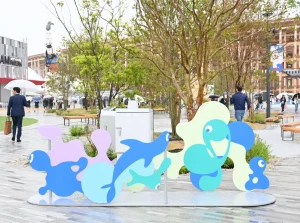
How to Get Tickets for Expo 2025 Osaka, Kansai
Expo 2025 tickets can be purchased through the official website or via authorized travel agencies. In either case, you’ll first need to register for a Expo ID through the official registration portal before purchasing a ticket.
・If purchasing from the official website:
After registering your Expo ID, you can proceed directly to purchase your ticket online.
・If purchasing through a travel agency:
You will need to link the Ticket ID provided by the agency to your registered Expo ID.
Once you’ve purchased your ticket, you’ll also need to reserve the date of your visit. Reservations can be changed up to three times within the ticket’s validity period. If you have a multi-entry pass, you can make changes as many times as needed. If you already know when you plan to attend, it’s best to make your reservation as early as possible.
Reservations for Pavilion and Event Entry
Some pavilions and events at Expo 2025 require advance reservations. There are four types of reservation windows, each with specific rules and timing.
- Lottery Reservation: 2 Months in Advance: You can apply for a reservation from three months to one day before your desired visit date.Lottery results will be announced two months prior to your chosen date.
- Lottery Reservation: 7 Days in Advance: You can also enter a second lottery from one month to 8 days before your visit. Winners will be notified starting 7 days before the reservation date.
In both lottery types, you may select up to 5 preferred pavilions or events, but you can win only one slot per lottery. To increase your chances, consider selecting multiple time slots and mixing both weekday and off-peak hours.
- Last-Minute Reservations: Open Slots: If there are any open slots, you can make a reservation from 3 days before until 9:00 a.m. on the day before your visit, on a first-come, first-served basis. Only one slot may be reserved during this period.
- Same-Day Reservations: Once you’ve entered the Expo site, you may check for available pavilions or events and make a reservation starting 10 minutes after entry. Same-day reservations are limited to one at a time—you must complete your current reservation before booking the next.
Tips: For popular pavilions, same-day and open-slot reservations may not be available. If there’s a pavilion you definitely want to see, we highly recommend applying during the 2-month or 7-day lottery periods.
Summary
Since its opening in April, Expo 2025 Osaka, Kansai has been buzzing with excitement every day. With a different theme, event, or performance happening daily, each visit offers something new and inspiring. What struck me most during my own visit was how deeply immersive the experience was—far beyond what I expected. The Expo stimulates all five senses. From the powerful visuals to the sounds, scents, textures, and even tastes, every corner of the venue invites you to feel the future, not just observe it.
At ENJYU JAPAN, we offer custom travel plans that combine a visit to the Expo with uniquely Kansai experiences—like exploring Osaka’s food culture, traditional crafts, and contemporary art. If you’re planning a trip to Japan, feel free to reach out. We’d love to help you design a journey that truly captures the spirit of Kansai.
